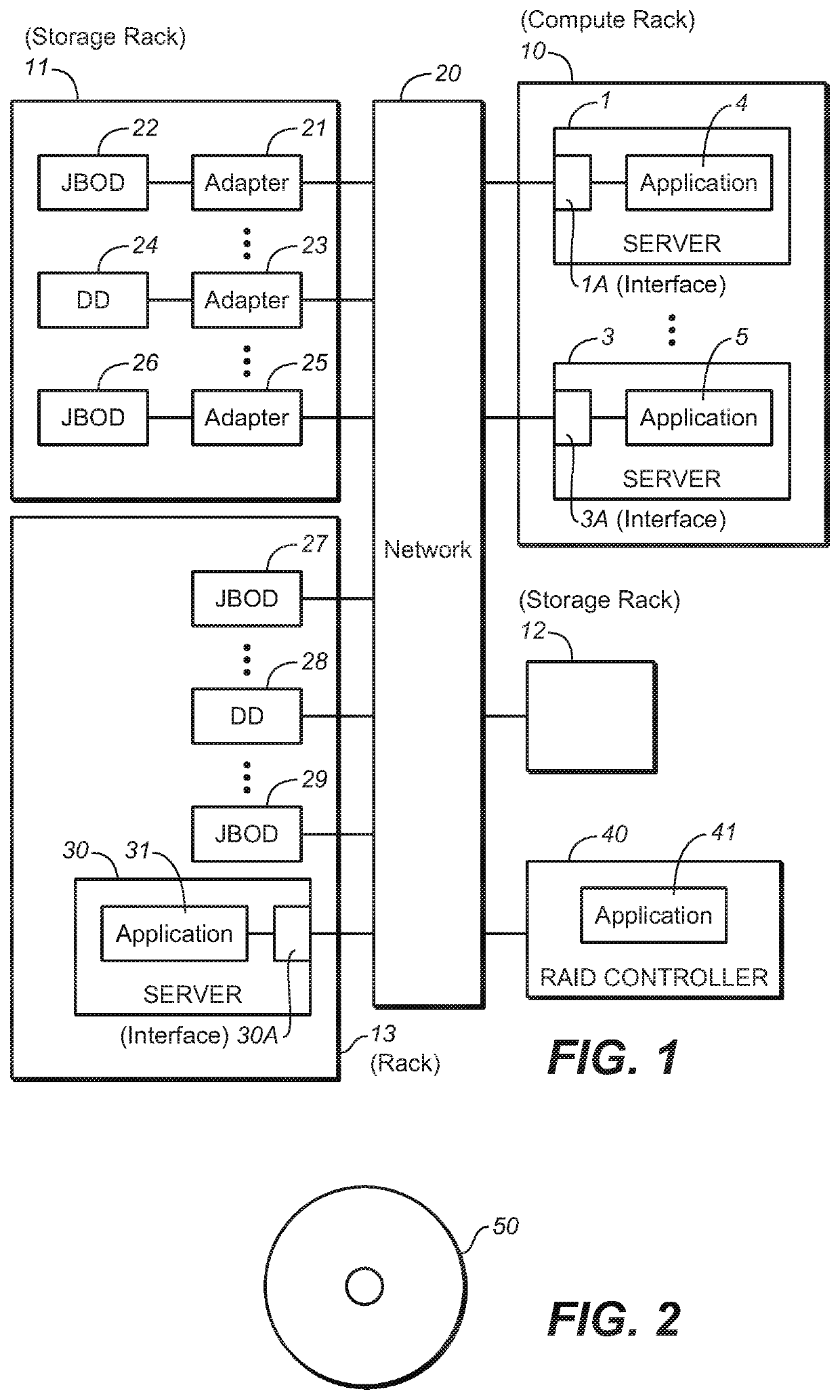For example, disk drives installed in a single rack (where the rack is coupled to a network, and a set of power connections and network switches is attached to the rack) have a common dependency on the status of the rack, and are thus typically subject to a common
failure risk that all the drives will fail (i.e., become inaccessible via the network) due to failure of the rack.
Individual disk drives can fail, and thereby lose all the data stored on them.
If important data is stored on only one disk drive, and it fails, there can be an enormous negative
impact on the operations of a business.
However, in most cases, the failure of a
single server or storage head can lead to a significant time to recover access to the data.
However, with many computers contributing to the solution, there would typically be many instances when at least one of them was broken or otherwise not operating correctly.
While it could often be possible to recover data from the broken computer after a time, it might be impossible for the total answer of a problem to be computed while some of the data was unavailable.
With such redundant storage on DAS drives of multiple servers, it would be counter-productive to use any
RAID technique on DAS drives within (or directly wired to) any individual
server, because the loss of one
server itself would remove access to the data that was duplicated within it (or on DAS drives directly wired to it), while still incurring the cost of the extra storage space for the data duplication.
However, such methods do not recognize or address the issue of how to assign (to each server of a composable architecture) drives which are external to the server in a manner (e.g., an efficient manner) which takes into consideration common failure risks, and the
data placement policy of such methods cannot take into consideration many common failure risks.
For example, if there are multiple sets of devices of a composable architecture in a rack, and each of the sets shares a different common
failure risk, the conventional methods cannot take into consideration such different common failure risks.
For another example, even if the conventional methods place copies of a single piece of data onto servers in multiple racks, if all those servers store data on drives having a common
failure risk (e.g., drives which are all in a single JBOD), occurrence of the common failure (e.g., failure of the single JBOD including all the drives) could make the data inaccessible.
Over time, traditional
data center environments moved away from DAS to the other attachment types (e.g., NAS and SAN) because putting the compute element and storage element(s) into a single device (in accordance with DAS) made it hard to make adjustments when the relative demand for compute elements versus storage elements changed.
However, conventional implementations of composable infrastructures have not addressed the issue of how to prevent the loss of access to data in the case of a failure of any device while ensuring that pools of allocable storage resources are sufficiently large.
Otherwise a
data center risks having a problem known as resource silos.
That is, by dividing resources into silos and restricting which
silo can be used, one can often reach a situation such that enough resources exist to perform a desired allocation, yet that the resources are in silos that cannot be used for the operation.
But, if allocations of disk drives to servers are unconstrained, this can lead to situations where a failure of one device can cause loss of an item of data.
For example, if allocations of disk drives to servers are unconstrained, and an application (e.g., Hadoop) places copies of a single piece of data onto servers in multiple racks, and the composable infrastructure has provided disk drives for all of those servers from a single JBOD, then the failure of the one JBOD box could make the data inaccessible (e.g., violating Hadoop's promise to keep the data always accessible).
The inventors have recognized that in composable infrastructures for scale-out applications, severe or crude constraints on allocations of disk drives to servers are undesirable (e.g., since they can lead to the resource
silo problem or to other inefficiencies), but some such constraints are needed to prevent loss of data due to
device failure (e.g., failure of a single device).
 Login to View More
Login to View More  Login to View More
Login to View More 
